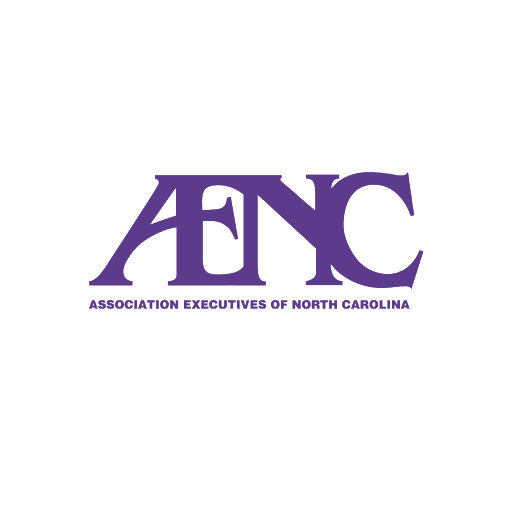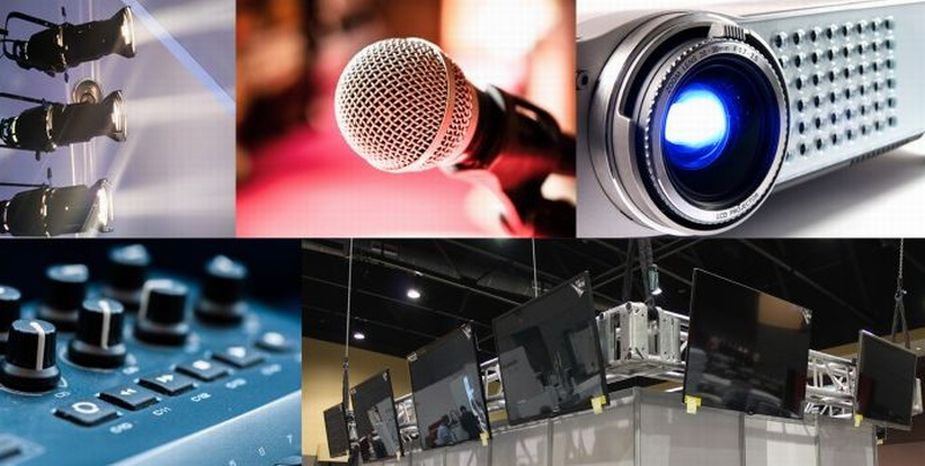The essential plan for executing events with audio visual charlotte nc
Comprehending the Addition of Audio Visual Technology in Today's Educational Environments
The combination of audio-visual modern technology in educational settings has actually changed the mentor and finding out procedure. Educators currently have accessibility to tools that provide to numerous discovering styles, boosting pupil interaction and partnership. Nonetheless, the consolidation of these innovations offers both chances and difficulties. Comprehending exactly how to successfully carry out these devices is crucial. What techniques can educators utilize to optimize the advantages of audio-visual technology in their class?
The Development of Audio-Visual Technology in Education
As academic demands evolved over the decades, audio-visual modern technology underwent significant changes that improved the knowing environment. Tools such as film projectors and slide programs were the main methods of incorporating aesthetic aspects into class. These early innovations supplied educators with the capacity to existing info dynamically, yet they were restricted in access and interactivity.
With the introduction of videotape recorder in the 1970s, classrooms started to integrate documented lessons, expanding the extent of instructional resources. The introduction of computers in the 1980s additional changed this landscape, permitting the creation of multimedia discussions and interactive learning experiences.
The surge of the web in the 1990s noted a zero hour, enabling real-time access to a riches of audio-visual materials. Today, digital devices such as interactive white boards and on-line knowing platforms remain to improve the educational experience, cultivating involvement and collaboration among students.
Benefits of Audio-Visual Devices for Diverse Discovering Styles
Audio-visual tools play an important duty in dealing with diverse understanding designs by improving aesthetic knowing and improving auditory interaction. By incorporating pictures, video clips, and noise, these innovations produce an even more inclusive instructional atmosphere. This complex technique permits instructors to attend to the diverse choices and requirements of pupils efficiently.
Enhancing Visual Discovering
Involvement in the learning process is substantially enhanced through using audio-visual devices, accommodating different finding out designs. These devices, such as video clips, infographics, and interactive discussions, supply visual stimuli that assist understanding and retention. Aesthetic learners, in certain, gain from the consolidation of images and animations, which can simplify complicated ideas and boost understanding. Additionally, audio-visual sources can show real-world applications, making discovering more relevant and appealing. By incorporating color, motion, and audio, educators can develop a dynamic knowing environment that records pupils' interest and cultivates much deeper cognitive links. Eventually, the strategic usage of audio-visual innovation not just sustains visual understanding yet also enriches the overall educational experience for diverse learners.
Improving Auditory Engagement
A considerable benefit of including audio-visual devices in education is their ability to enhance auditory engagement among trainees. These devices, which include multimedia presentations, podcasts, and interactive sound elements, accommodate numerous finding out styles, specifically profiting auditory students (audio visual charlotte nc). By integrating audio and narrative, educators can develop immersive experiences that record pupils' focus and enhance understanding. This engagement is vital, as it fosters a deeper understanding of the product and advertises retention. In addition, audio-visual devices can assist in collective learning atmospheres, urging pupils to take part in discussions and share their insights. Eventually, the consolidation of audio-visual technology not only sustains auditory engagement yet likewise enhances the general instructional experience, making discovering much more dynamic and effective for all trainees
Enhancing Involvement Via Interactive Knowing

Furthermore, gamification elements, such as tests and simulations, can improve inspiration and retention, making discovering much more pleasurable and efficient. These techniques not just boost cognitive engagement but additionally deal with varied understanding designs, making certain that all students can take part meaningfully. Consequently, interactive understanding settings foster a feeling of community and belonging, eventually causing improved scholastic results. Via the assimilation of audio aesthetic innovation, educators can change typical classrooms right into dynamic areas where students flourish and actively form their educational journeys.
Bridging Theory and Exercise With Multimedia Resources
Multimedia sources function as a crucial link in between theoretical concepts and useful application in instructional settings. By enhancing interaction, helping with collaborative knowing experiences, and sustaining varied learning designs, these tools develop an extra comprehensive and dynamic learning atmosphere - audio visual charlotte nc. This method not just cultivates deeper understanding but likewise prepares pupils for real-world obstacles

Enhancing Engagement With Multimedia
Involvement in instructional try here settings considerably boosts when trainers integrate multimedia sources into their training approaches. Making use of video clips, podcasts, and interactive presentations boosts the learning experience, permitting trainees to link with the product on numerous degrees. Multimedia sources deal with various finding out designs, offering aesthetic, acoustic, and kinesthetic stimuli that can hold pupils' attention a lot more efficiently than traditional lecture methods. Additionally, these resources can simplify complex ideas, making them much more obtainable and remarkable. By integrating multimedia, educators can develop a dynamic class atmosphere that cultivates interest and encourages students. Inevitably, the critical use of audio-visual technology serves to bridge the gap in between academic expertise and functional application, enhancing the academic experience for both instructors and pupils.
Facilitating Collaborative Understanding Experiences
Various studies indicate that joint learning experiences substantially boost trainee results when integrated with multimedia resources. Multimedia tools promote communication amongst trainees, allowing them to participate in analytic and important thinking jointly. By making use of video clip conferencing, collective platforms, and interactive presentations, instructors create settings favorable to teamwork and shared understanding. These modern technologies allow trainees to communicate their concepts efficiently and receive instant feedback, cultivating a much deeper understanding of the subject matter. Additionally, multimedia resources can present complex principles in more absorbable formats, promoting discussion and cooperation. Therefore, the mix of collective understanding and audio-visual technology not only enriches the educational experience yet additionally prepares students for real-world team effort dynamics, stressing the relevance of cooperation and collective knowledge building and construction.
Sustaining Diverse Learning Styles
While traditional training approaches usually satisfy a minimal series of finding out choices, the integration of audio-visual modern technology uses an extra comprehensive technique to education. By employing multimedia resources such as videos, interactive simulations, and digital presentations, educators can resolve various discovering styles, consisting of visual, auditory, and kinesthetic. This versatility enables set apart direction, making it possible for students to involve with content in methods that resonate with their individual preferences. In addition, audio-visual tools can facilitate much deeper understanding by providing numerous representations of intricate principles. Consequently, students that might deal with traditional approaches can discover different pathways to success, cultivating an extra fair learning setting that sustains scholastic success for all students.
Obstacles in Executing Audio-Visual Modern Technology
Although audio-visual innovation holds terrific pledge for enhancing educational experiences, its application often comes across substantial challenges. One primary issue is the monetary problem associated with purchasing and keeping such tools, which can stress budget plans, particularly in underfunded institutions. In addition, poor training for instructors can hinder efficient assimilation, leaving them ill-prepared to utilize the innovation fully. Technical issues, such as software application malfunctions and compatibility issues, may likewise interfere with lessons and irritate both instructors and pupils. Varying degrees of student access to technology outside the classroom can develop disparities in learning chances. The possibility for over-reliance on modern technology may detract from vital teaching techniques, inevitably restricting the instructional experience. Attending to these challenges calls for a discover here comprehensive strategy, consisting of adequate financing, expert development, and equitable accessibility to sources, to guarantee that audio-visual modern technology can be leveraged properly in today's instructional settings.
Best Practices for Integrating Technology in the Classroom

Furthermore, promoting an interactive setting through collective devices motivates student involvement and involvement. Making use of diverse audio-visual resources satisfies various discovering designs, accommodating visual, acoustic, and kinesthetic learners. Routinely assessing the influence of modern technology on student understanding helps teachers fine-tune their strategies and adapt to altering demands. Lastly, entailing trainees in the choice of technology advertises ownership and motivation. By sticking to these ideal techniques, teachers can develop a vibrant class atmosphere that successfully incorporates technology and boosts the instructional experience for all trainees.
The Future of Audio-Visual Technology in Education
As classrooms significantly embrace innovation, the landscape of audio-visual tools in education proceeds to develop (audio visual charlotte nc). Future developments are expected to concentrate on greater interactivity and personalization, enabling instructors to tailor finding out experiences to individual student demands. Advancements such as augmented fact (AR) and virtual reality (VIRTUAL REALITY) will likely give immersive discovering atmospheres, enhancing pupil interaction and understanding
Additionally, expert system (AI) is positioned to play a significant function in audio-visual innovation by providing real-time responses and adaptive knowing paths. This combination may aid teachers identify and resolve pupil challenges better. Cloud-based platforms will certainly facilitate much easier access to resources and cooperation among students and teachers, despite location.
Along with these technical advances, professional advancement for teachers will be important, ensuring they are furnished to utilize these tools efficiently. Overall, the you can try here future of audio-visual innovation in education assures to produce even more vibrant, inclusive, and impactful discovering experiences.
Frequently Asked Concerns
Exactly How Can Teachers Choose the Right Audio-Visual Devices for Their Class?
Picking appropriate audio-visual tools needs educators to examine their educational goals, take into consideration trainee requirements, evaluate offered innovation, and look for recommendations from peers or experts, making sure devices efficiently enhance discovering and involvement within their specific class setting.
What Budget Considerations Are There for Carrying Out Audio-Visual Technology?
Budget factors to consider for executing audio-visual innovation consist of preliminary purchase prices, maintenance costs, training for staff, and potential software application licensing fees. Furthermore, long-term financial investment in updates and replacements ought to also be factored into financial preparation.
Exist Certain Training Resources for Educators on Audio-Visual Tools?
Numerous organizations use training resources for educators on audio-visual devices, consisting of on-line programs, workshops, and educational overviews. These resources intend to improve instructors' skills and confidence in efficiently integrating technology into their mentor techniques.
Exactly how Do We Determine the Effectiveness of Audio-Visual Innovation in Learning?
Measuring the effectiveness of audio-visual technology in finding out includes evaluating student interaction, comprehension, retention rates, and overall scholastic performance. Surveys, evaluations, and observational researches can give valuable insights into its impact on academic results.
What Prevail Misunderstandings Regarding Audio-Visual Innovation in Education And Learning?
Typical misunderstandings about audio-visual modern technology in education and learning consist of the belief that it guarantees involvement and finding out results, along with the assumption that all trainees profit similarly, overlooking individual learning preferences and needs.